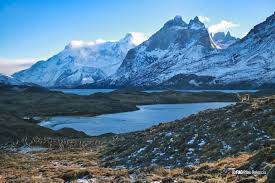Water Scarcity and Management in North America: Innovations for Conservation

Updated at: 2023-08-27 10:19:47 (2 years ago by Melkisedeck Leon Shine)
Water Scarcity and Management in North America: Innovations for Conservation
Water scarcity is a pressing issue that affects not only North America but also South America. As the world's population continues to grow and climate change exacerbates the problem, it is crucial for us to come together and find innovative solutions to conserve this precious resource. In this article, we will delve into the contemporary issues surrounding water scarcity and management in North and South America, while providing professional advice on how we can address these challenges.
-
The current state of water scarcity: Water scarcity is already a reality in many parts of North and South America. Droughts, population growth, and inefficient water management practices have contributed to this crisis.
-
The impact of climate change: Climate change is exacerbating water scarcity by altering weather patterns and increasing the frequency and severity of droughts. It is essential to address these challenges to secure a sustainable water supply for future generations.
-
Innovative water conservation techniques: Numerous innovative techniques are being developed to conserve water. These include rainwater harvesting, graywater recycling, and water-efficient irrigation systems. Implementing these practices can significantly reduce water consumption.
-
The role of technology: Technology plays a crucial role in water management. Advanced monitoring systems, such as smart meters and remote sensing, enable us to monitor water usage more efficiently and identify leaks or inefficiencies in real-time.
-
Collaborative approaches to water management: Water scarcity knows no borders, and collaborative approaches between nations are essential. Cooperation between North and South American countries can lead to more effective water management strategies, such as sharing best practices and coordinating water allocation.
-
The importance of education and awareness: Educating the public about water scarcity and the need for conservation is crucial. By raising awareness, we can foster a culture of water conservation and encourage individuals to take action.
-
Government policies and regulations: Governments play a significant role in addressing water scarcity through the implementation of policies and regulations. These can include water pricing mechanisms, water use restrictions, and incentivizing water-efficient practices.
-
Sustainable agriculture practices: Agriculture accounts for a significant portion of water consumption in North and South America. Encouraging sustainable farming practices, such as precision irrigation and crop rotation, can help reduce water usage in this sector.
-
Investing in infrastructure: Aging water infrastructure contributes to water loss through leaks and inefficiencies. Investing in modernizing and upgrading infrastructure can help reduce water wastage and ensure a more efficient water supply.
-
The importance of water rights and access: Ensuring equitable access to water is essential. Developing policies that prioritize the needs of marginalized communities and indigenous peoples can help address social inequalities related to water scarcity.
-
Conservation in urban areas: Urban areas also play a significant role in water conservation efforts. Implementing water-efficient fixtures, promoting water-wise landscaping, and encouraging responsible water use by individuals can make a substantial impact.
-
The role of NGOs and community organizations: NGOs and community organizations play a crucial role in advocating for water conservation and implementing grassroots initiatives. Supporting and collaborating with these organizations can strengthen water management efforts.
-
Encouraging research and innovation: Investing in research and innovation is vital for finding sustainable solutions to water scarcity. By supporting scientific advancements and fostering a culture of innovation, we can discover new ways to conserve and manage water resources effectively.
-
Engaging in international forums and summits: Participating in international forums and summits on water management allows North and South American countries to share experiences, learn from each other, and develop joint strategies to address water scarcity.
-
Taking action: The key to addressing water scarcity lies in individual and collective action. Each one of us can contribute by adopting water-saving practices, supporting conservation initiatives, and advocating for responsible water management.
In conclusion, water scarcity is a critical issue that requires our immediate attention and collective effort. By embracing innovative conservation techniques, collaborating with neighboring countries, and promoting sustainable practices, we can secure a sustainable water supply for North and South America. Let us unite in our commitment to preserve this valuable resource for future generations. Will you join the movement? Share this article and spread the word about water conservation! #WaterScarcity #WaterManagement #ConservationEfforts




